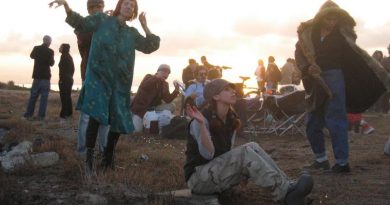The Persian Diaspora
The Persian diaspora currently numbers at around 4.5 million people around the world. A significant portion of this population lives in the United States, numbering around 1.5 million (most of whom live in Los Angeles and elsewhere in Southern California). Outside of the United States, major Persian hubs include the United Arab Emirates (800,000), Turkey (650,000), Iraq (500,000) and Canada (200,000).
Iranian emigration has existed for centuries and given the size and scope of the historic Persian Empire, it is likely that many more ethnic Persians exist throughout the world. However, the Persian Diaspora emerged mainly following the outbreak of the 1979 Iranian Revolution, which caused significant population displacement.
Prior to the Iranian Revolution, the country had been ruled under the monarchy system for over 2500 years. The Shah, Mohammad Reza Shah Pahlavi was an ally to the United States government, and had overseen sweeping reform in the economic, industrial and social spheres. Indeed, prior to the outbreak of the Revolution, Iran was arguably the most westernised country in the entire Middle East. Despite these attempts at reform, the Shah was met with considerable opposition from a number of different fronts. Traditional and radical Shia political opponents were highly critical of his bids at modernisation and his closeness with the United States. He also alienated the working class, thus losing a significant base of support.
The Shah’s own personal character and actions became problematic. His administration quickly became mired in corruption while he resorted to coercive political tactics and began to suppress all opposition against him, notably barring the communist Tudeh party. Opposition gradually developed to the point of revolt, with Islamic and left wing political organisations banding together to oust him from power. The upheaval caused by the revolution caused the course of Iran’s history to change forever.
Many of Iran’s wealthier elite fled the country due to their closeness to the Shah and affinity for the way of life under his rule while minorities such as Iranian Jews fled out of fears of persecution under the radical new Islamic regime. Indeed, this accounts for why the majority of Iranian Jews live in more liberal countries such as the United States and Israel.
It is perhaps due to the pre-Revolution culture and closeness between the United States and Iran which draw so many Persian exiles to America. Los Angeles emerged as a major population hub, in part due to the environmental similarities to Iran but also possibly due to the pre-existing major Jewish and Iranian communities.

Nasim Pedrad, Iranian-American Actress, Dominick D, Flickr Creative Commons
Prior to the outbreak of the Iranian Revolution, many wealthier Iranians settled in the United States or Europe due to the quality of education in universities. Indeed, a 1975 survey stated that the highest foreign student population in the country was Iranian. Many of these students remained in the United States following the revolution due to fears of repression upon their return. This accounts for large Iranian populations in major cities such as Los Angeles and Washington, DC.
Sizeable Iranian populations exist throughout major European and North American cities such as London, Paris, Berlin and Toronto. The liberal, tolerant atmosphere in cities such as these reflect the values of these displaced expatriates, who became alienated by the repressive atmosphere that came into effect after the Revolution.
main image: Max Amini, Persian American Stand Up Comedian, Amsterdam, May 2015. Photo by Persian Dutch Network.



